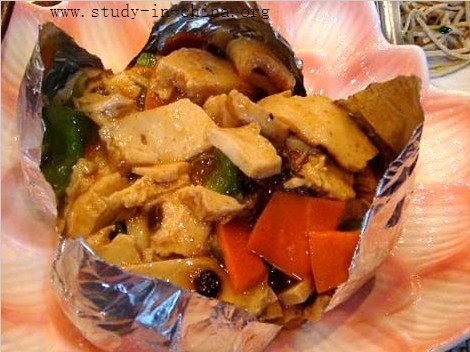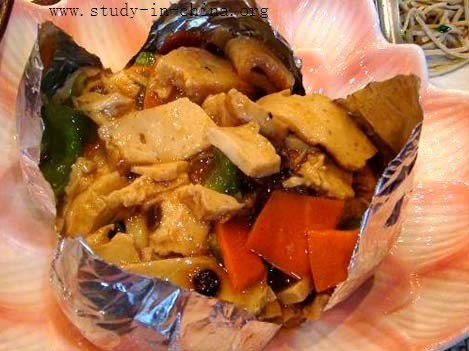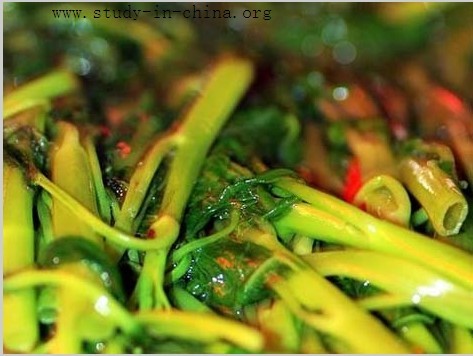more>>More News
Chinese Vegetable Dishes
By admin on 2015-02-03

Vegetable dish generally refers to the dish cooked by vegetable oil, vegetables, soybean products, gluten, bamboo shoots, fungus, algae, dried or fresh fruits and other plant materials. Vegetable dish occupies a major position in our daily diet and is also an important part of the Chinese cooking culture.
 China's vegetable dish culture has a long history and it has nothing
less than the meat dish in terms of no matter the variety, the material
selection, the elaborate cooking skill, or the style. China's vegetable dish
culture can be traced back to the Western Han Dynasty. It is said that the then
Huainan King Liu An invented tofu which made great contribution to the
development of the vegetable dish. Tofu is not only an important raw material of
vegetable dish but also full of quality protein. Therefore, the invention of
tofu not only enriched the content of vegetable dish but also endowed the
vegetable dish with powerful persuasion in regard to nutrition. Besides, the
Chinese vegetable dish also has the history of going abroad. It is recorded in
the Japanese literature that when Monk Yinyuan went to Japan in the late Ming
Dynasty, he also brought the Chinese cooking skills there, including the cooking
methods of "pure vegetables".
China's vegetable dish culture has a long history and it has nothing
less than the meat dish in terms of no matter the variety, the material
selection, the elaborate cooking skill, or the style. China's vegetable dish
culture can be traced back to the Western Han Dynasty. It is said that the then
Huainan King Liu An invented tofu which made great contribution to the
development of the vegetable dish. Tofu is not only an important raw material of
vegetable dish but also full of quality protein. Therefore, the invention of
tofu not only enriched the content of vegetable dish but also endowed the
vegetable dish with powerful persuasion in regard to nutrition. Besides, the
Chinese vegetable dish also has the history of going abroad. It is recorded in
the Japanese literature that when Monk Yinyuan went to Japan in the late Ming
Dynasty, he also brought the Chinese cooking skills there, including the cooking
methods of "pure vegetables".

It is generally recognized that the Chinese vegetable dish has three major schools and two main styles. The three major schools include the imperial court vegetable dish, the monastery vegetable dish and the civil vegetable dish. The two styles include "complete vegetable style" and "incomplete vegetable style". The former is mainly represented by the monastery vegetable dish that does not use the "five Hun" including eggs, shallot, garlic and others. The latter is mainly represented by the civil vegetable dish in which the "five Hun" and eggs, or even seafood, animal fats and broth are allowed.
- Contact Us
-
Tel:
0086-571-88165708
0086-571-88165512E-mail:
admission@cuecc.com
- About Us
- Who We Are What we do Why CUECC How to Apply
- Address
- Study in China TESOL in China
Hangzhou Jiaoyu Science and Technology Co.LTD.
Copyright 2003-2024, All rights reserved





 Chinese
Chinese
 English
English
 Korean
Korean
 Japanese
Japanese
 French
French
 Russian
Russian
 Vietnamese
Vietnamese
